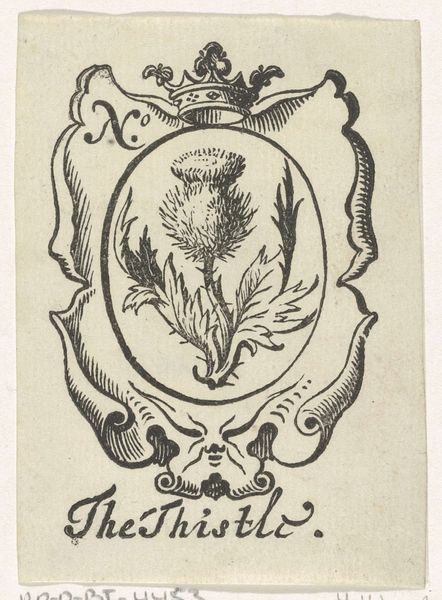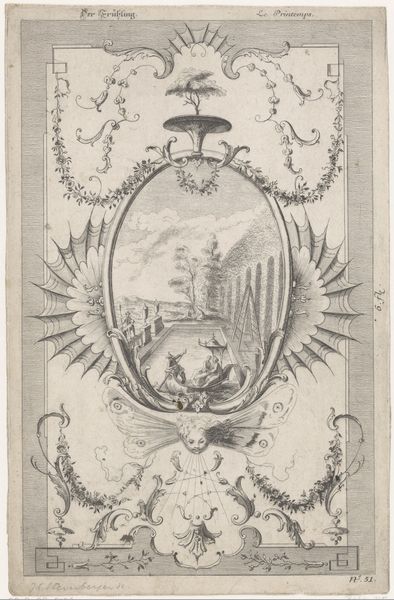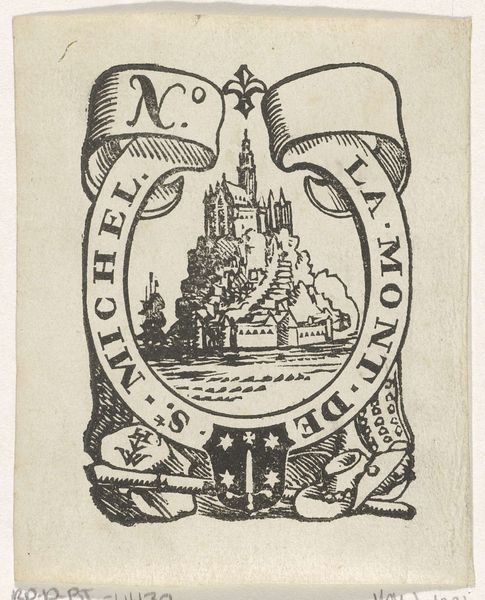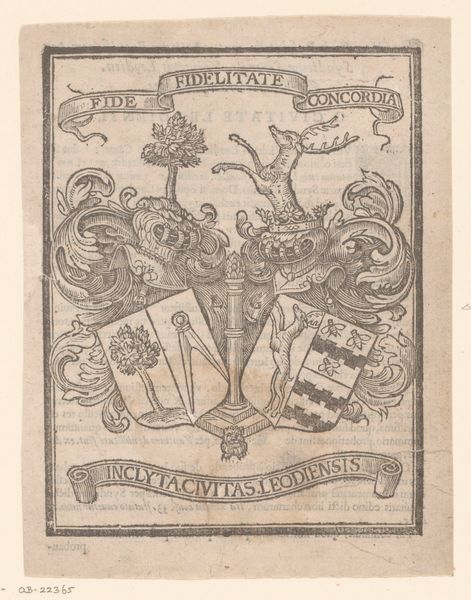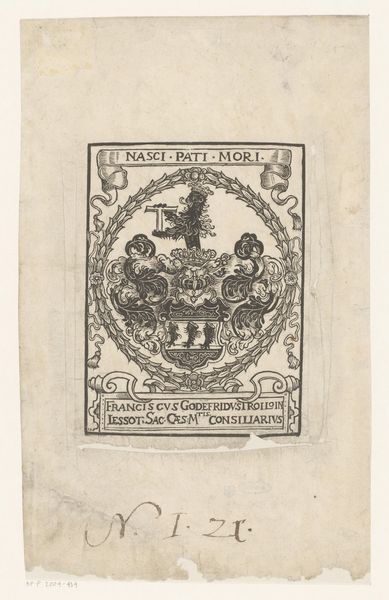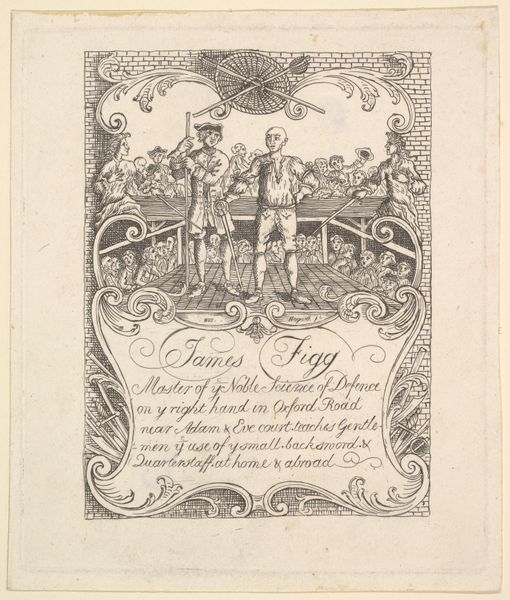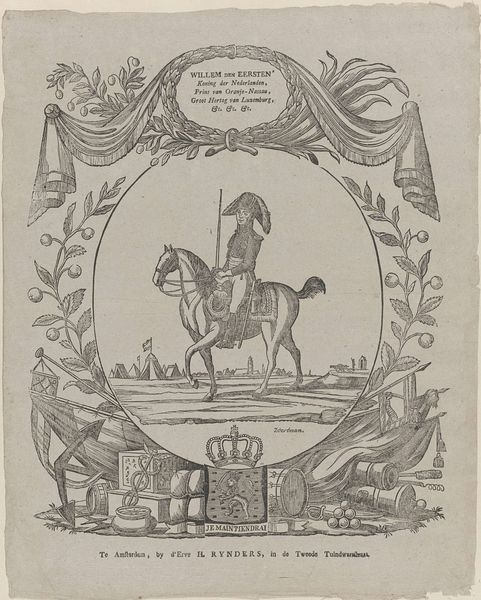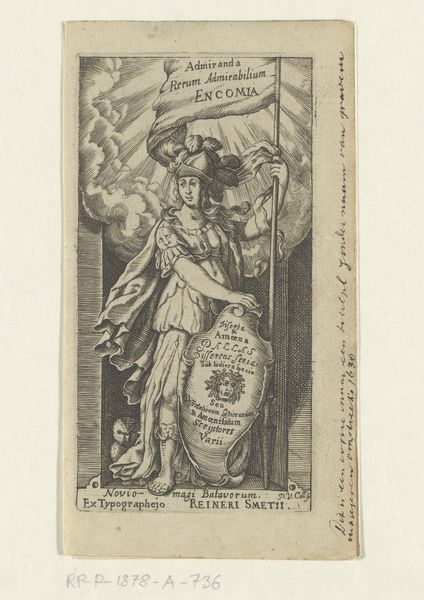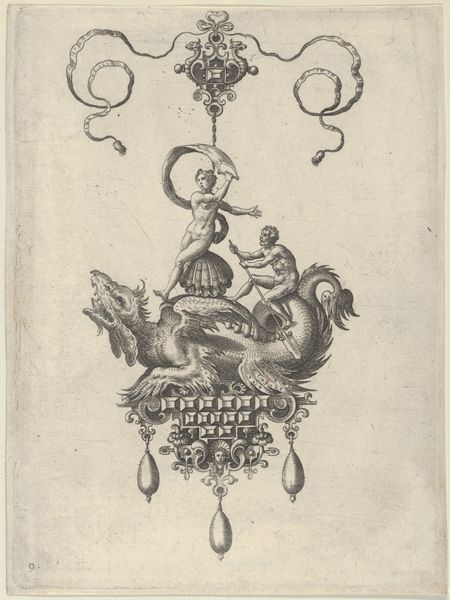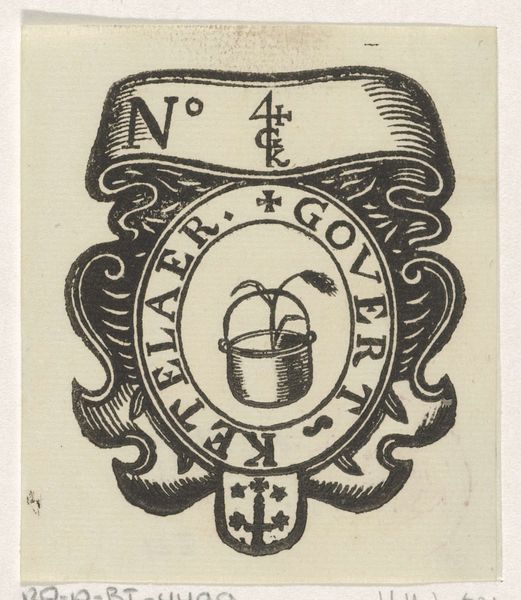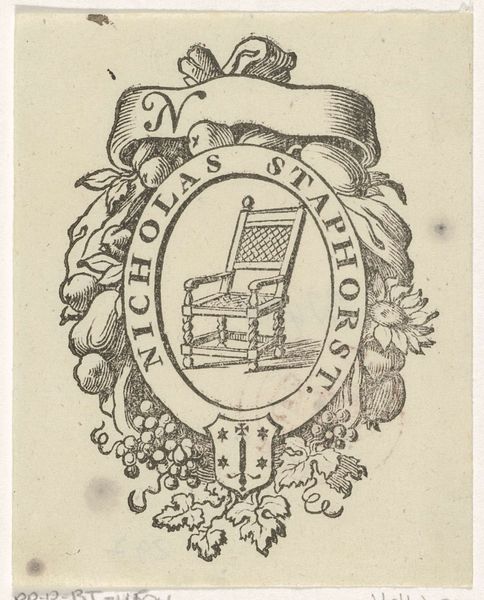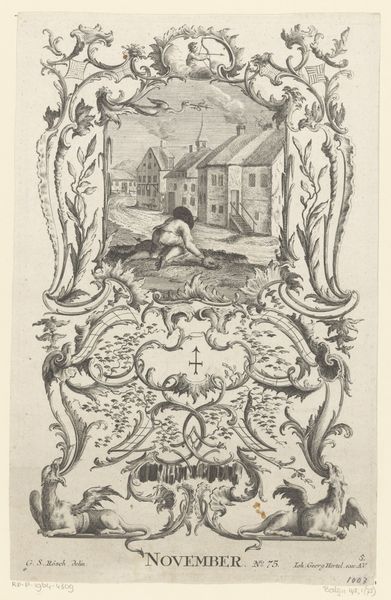
Handelsetiket met een figuur bij een bleekveld, een kroon en het wapen van de stad Haarlem c. 1681 - 1740
graphic-art, print, engraving
portrait
graphic-art
genre-painting
engraving
Dimensions: height 87 mm, width 69 mm
Copyright: Rijks Museum: Open Domain
Curator: Well, hello there! This looks like a delightful riddle wrapped in an image. Editor: Indeed. What we’re seeing is “Handelsetiket met een figuur bij een bleekveld, een kroon en het wapen van de stad Haarlem,” a trade label from roughly 1681 to 1740, likely engraved by Isaac Vincentsz. van der Vinne. Immediately, I notice it's much more than a simple commercial tag. The inclusion of a crown and city arms elevates the depiction of labour into something symbolically charged. Curator: A riddle is precisely what this is! It's like a tiny stage setting—the field worker, that oddly regal crown—it makes me wonder, what exactly is this "bleekveld," or bleaching field, anyway? And why frame it with such ornate detail? Editor: Ah, context is key! Haarlem was renowned for its linen industry. Bleaching fields were crucial for whitening textiles using sunlight and chemicals. This tag isn’t just about commerce; it's about civic pride and Dutch industriousness in the Golden Age. Curator: So, sunshine was essentially a designer element. That’s marvelous. This tiny label sings a hymn to turning something humble – raw flax, work clothes -- into gleaming textiles, all under the eye of sun and crowned by Haarlem's own insignia! Almost alchemical, really. Editor: It definitely hints at alchemy. Note how this labour is constructed – "le blanchisseur de fill", which is to say "the thread bleacher" – it is overtly masculine. We should not assume the labour of bleaching textiles was evenly gendered. Curator: Ah, quite right, something like this doesn’t happen in a vacuum. Editor: Absolutely. So this trade label visually champions a burgeoning merchant class as well as the physical strength inherent to that moment in Dutch industrialisation. It tells a layered story about labour, trade, and municipal pride, subtly encoded for contemporary viewers. Curator: A grand reminder that even the smallest artifact can speak volumes if we're willing to listen closely! Editor: Exactly! By deconstructing images like this, we create critical and crucial discussions that will help shape how we engage with art in the future.
Comments
No comments
Be the first to comment and join the conversation on the ultimate creative platform.
